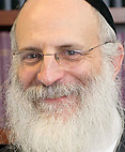| Abstract: |
Postoperative atrial fibrillation (POAF) complicating general thoracic surgery is a marker of increased morbidity and stroke risk. Our goal was to determine whether increased preoperative brain natriuretic peptide (BNP) levels are able to stratify patients by the risk of POAF. Using a prospective database of 415 patients aged 60 years or older, who had undergone lung or esophageal surgery during a 1-year period, the preoperative clinical data, including BNP levels, were compared between patients who developed POAF lasting longer than 5 minutes during hospitalization and those who did not. POAF occurred in 65 (16%) of the 415 patients and was more frequent among patients who had undergone esophagectomy or anatomic lung resection (22% or 58 of 269) compared with those who did not (5% or 7 of 146; P < .0001). After esophagectomy or anatomic lung resection, 46 (34%) of the 135 patients with BNP levels greater than the median (≥ 30 pg/mL) developed POAF compared with only 12 (9%) of 134 patients with BNP levels less than 30 pg/mL (P < .0001). The rates of POAF in patients undergoing other thoracic procedures were low and not associated with the BNP levels. Multivariate logistic regression analysis showed that in patients undergoing esophagectomy or anatomic lung resection, older age (5-year increments, odds ratio [OR], 1.28; 95% confidence interval [CI], 1.01-1.61; P = .04), male gender (OR, 2.61; 95% CI, 1.12-4.17; P = .02), and BNP level 30 pg/mL or greater (OR, 4.52; 95% CI, 2.19-9.32; P < .0001) were independent risk factors for POAF. The length of hospital stay was significantly increased in patients who developed POAF compared with those who did not (P < .0001). Among patients undergoing anatomic lung resection or esophagectomy, increased age, male gender, and preoperative BNP level of 30 pg/mL or greater were significant risk factors for the development of POAF. The identification of patients who are more likely to develop POAF will allow the development of trials assessing prevention strategies aimed at reducing this complication. Copyright © 2012 The American Association for Thoracic Surgery. Published by Mosby, Inc. All rights reserved. |











